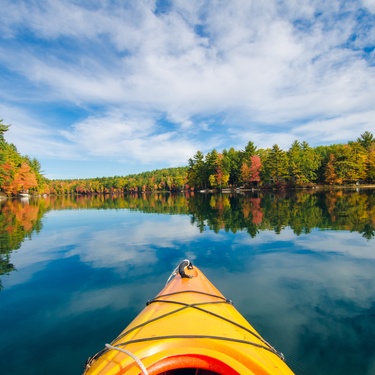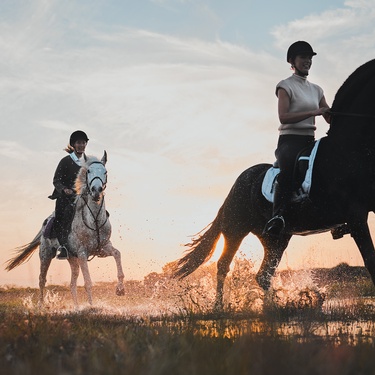
Kayaking has grown tremendously in popularity over the past decade, attracting outdoor enthusiasts who seek adventure on rivers, lakes, and coastal waters. The sport appeals to people of all ages and fitness levels, offering everything from peaceful lake paddling to challenging whitewater runs. However, the increasing variety of kayak options available today can make choosing the right one feel overwhelming.
Selecting the wrong kayak can lead to frustration, safety concerns, and wasted money. A kayak that doesn’t match your intended activities or skill level will sit unused in storage, while one that’s too advanced might compromise your safety on the water. Understanding the key factors that influence your kayak choice will help you make an informed decision that enhances your paddling experience for years to come.
This comprehensive guide walks you through the essential considerations every prospective kayak owner should evaluate before making a purchase. From understanding different kayak types to assessing your budget and storage needs, these factors will guide you toward the perfect vessel for your aquatic adventures. Here’s what to consider before purchasing a kayak.
Types of Kayaks
The kayak market offers several distinct categories, each designed for specific conditions and paddling styles. Understanding these differences forms the foundation of making a smart purchase decision.
Sit-on-Top Kayaks
Sit-on-top kayaks feature an open cockpit design that allows paddlers to sit on the surface rather than inside the hull. These models excel in warm weather conditions and provide easy entry and exit. Their self-draining scupper holes prevent water accumulation, making them ideal for beginners who worry about capsizing. The open design also accommodates larger paddlers more comfortably and offers superior freedom of movement.
Sit-Inside Kayaks
Sit-inside kayaks place the paddler within an enclosed cockpit, offering better protection from wind, waves, and cold water. The enclosed design provides superior paddling efficiency and speed compared to sit-on-top models. These kayaks track straighter through the water and perform better in rough conditions, though they require more skill to handle safely.
Inflatable Kayaks
Inflatable kayaks have revolutionized portable paddling options. Modern inflatable models use durable materials and advanced construction techniques that rival traditional hard-shell kayaks in performance. They offer unmatched convenience for people with limited storage space or transportation options, though they typically sacrifice some speed and tracking ability.
Tandem Kayaks
Tandem kayaks accommodate two paddlers and work well for couples, families, or friends who want to share the paddling experience. These longer vessels offer increased storage capacity and can handle heavier loads, making them excellent for camping trips or extended outings.
Intended Use
Your planned activities on the water significantly influence which kayak type will best suit you. Recreational paddling on calm lakes and slow rivers requires different features than ocean kayaking or fishing expeditions.
Recreational
Recreational kayaking focuses on leisurely exploration of protected waters. Paddlers in this category prioritize comfort, stability, and ease of use over speed or advanced features. Wide, stable kayaks with comfortable seating systems work best for casual outings that might last several hours.
Fishing
Fishing kayaks incorporate specialized features like rod holders, tackle storage, and enhanced stability for casting and reeling in fish. These models often feature wider hulls that sacrifice speed for the rock-solid stability needed when fighting fish. Many fishing kayaks include mounting systems for fish finders, GPS units, and other electronics.
Touring
Touring kayaks target paddlers who want to cover longer distances or handle more challenging conditions. These sleek vessels prioritize speed, tracking, and cargo capacity over initial stability. They feature longer waterlines that cut through waves efficiently and ample storage compartments for multi-day trips.
Whitewater
Whitewater kayaks represent the most specialized category, designed specifically for navigating rapids and rough water. These short, highly maneuverable boats require advanced skills and don’t translate well to other paddling activities.
Skill Level
Your current paddling ability should heavily influence your kayak selection. Choosing a kayak that matches your skill level promotes safety and enjoyment on the water while providing room for growth.
Beginners
Beginning paddlers benefit from kayaks that prioritize initial stability over speed or advanced features. Wide hulls with flat bottoms feel steady and confidence-inspiring for new paddlers learning basic strokes and water safety. These forgiving designs allow beginners to focus on developing proper technique without constantly worrying about balance.
Intermediate
Intermediate paddlers who have mastered basic strokes and water safety can consider kayaks with improved speed and efficiency. These models might sacrifice some initial stability for better tracking and higher top speeds. Intermediate paddlers often appreciate kayaks with adjustable features that allow customization as skills develop.
Advanced
Advanced paddlers typically seek kayaks optimized for specific activities or conditions. These experienced individuals can handle less stable designs that offer superior performance characteristics. They often prioritize features like lightweight construction, advanced hull shapes, or specialized rigging systems.
Budget
Kayak prices span an enormous range, from basic recreational models under $300 to high-end touring kayaks exceeding $3,000. Understanding this price spectrum and the factors that drive costs helps you set realistic expectations and find the best value for your needs.
Entry-level kayaks typically cost between $250 and $600. These models focus on basic functionality and durability rather than advanced features or premium materials. They work well for casual paddlers who prioritize affordability over performance. However, extremely cheap kayaks often use inferior materials that may not withstand regular use.
Mid-range kayaks, priced from $600 to $1,500, offer significant improvements in comfort, durability, and performance. These models often feature better seating systems, improved hull designs, and higher-quality construction materials. This price range represents the sweet spot for many paddlers who want good performance without premium costs.
High-end kayaks command prices from $1,500 to $4,000 or more. These premium models use advanced materials like carbon fiber or high-grade fiberglass, feature sophisticated hull designs, and include top-tier components throughout. Serious paddlers who spend significant time on the water often find these investments worthwhile.
Remember that the kayak purchase represents only part of your total investment. Essential accessories include a paddle, a personal flotation device, and appropriate clothing. Optional gear like dry bags, roof racks, and safety equipment can add several hundred dollars to your total outlay.
Storage and Transportation
Where and how you’ll store and transport your kayak significantly impacts which models you should consider. These practical factors often receive insufficient attention during the purchase process, leading to regret later.
Home storage options vary dramatically depending on your living situation. Apartment dwellers face the greatest challenges, often limiting them to inflatable models or requiring expensive off-site storage solutions. Homeowners with garages have more flexibility, though longer kayaks may not fit in standard garage spaces. Garage storage options for kayaks include ceiling-mounted pulley systems, wall-mounted brackets, and freestanding racks, all of which maximize space efficiency while protecting your investment.
Outdoor storage exposes kayaks to UV damage, temperature extremes, and potential theft. If outdoor storage is your only option, invest in a high-quality cover and secure storage system. Some kayak materials handle outdoor exposure better than others, with rotomolded plastic showing superior UV resistance compared to fiberglass or composite materials.
Transportation requirements influence both kayak selection and additional equipment needs. Longer kayaks require roof rack systems and may exceed the capacity of smaller vehicles. Heavier kayaks challenge solo paddlers who need to load and unload independently. Consider your vehicle’s roof rack capacity, your physical ability to handle the kayak’s weight, and any restrictions from your living situation.
Making Your Final Decision
Armed with knowledge about kayak types, intended uses, skill considerations, budget constraints, and practical factors, you can now make an informed purchase decision that matches your specific kayak needs and circumstances.
Start by honestly evaluating your primary paddling goals and current skill level. Consider where you’ll most often paddle and what conditions you’ll encounter. Factor in your budget constraints and don’t forget to account for necessary accessories and gear.
Visit local paddle shops and demo days whenever possible. Nothing replaces actually sitting in and paddling different kayaks to understand how they feel and perform. Many shops offer rental programs that let you try before you buy, reducing the risk of making an expensive mistake.
Bio: Casey is a passionate copyeditor highly motivated to provide compelling SEO content in the digital marketing space. Her expertise includes a vast range of industries from highly technical, consumer, and lifestyle-based, with an emphasis on attention to detail and readability.




















